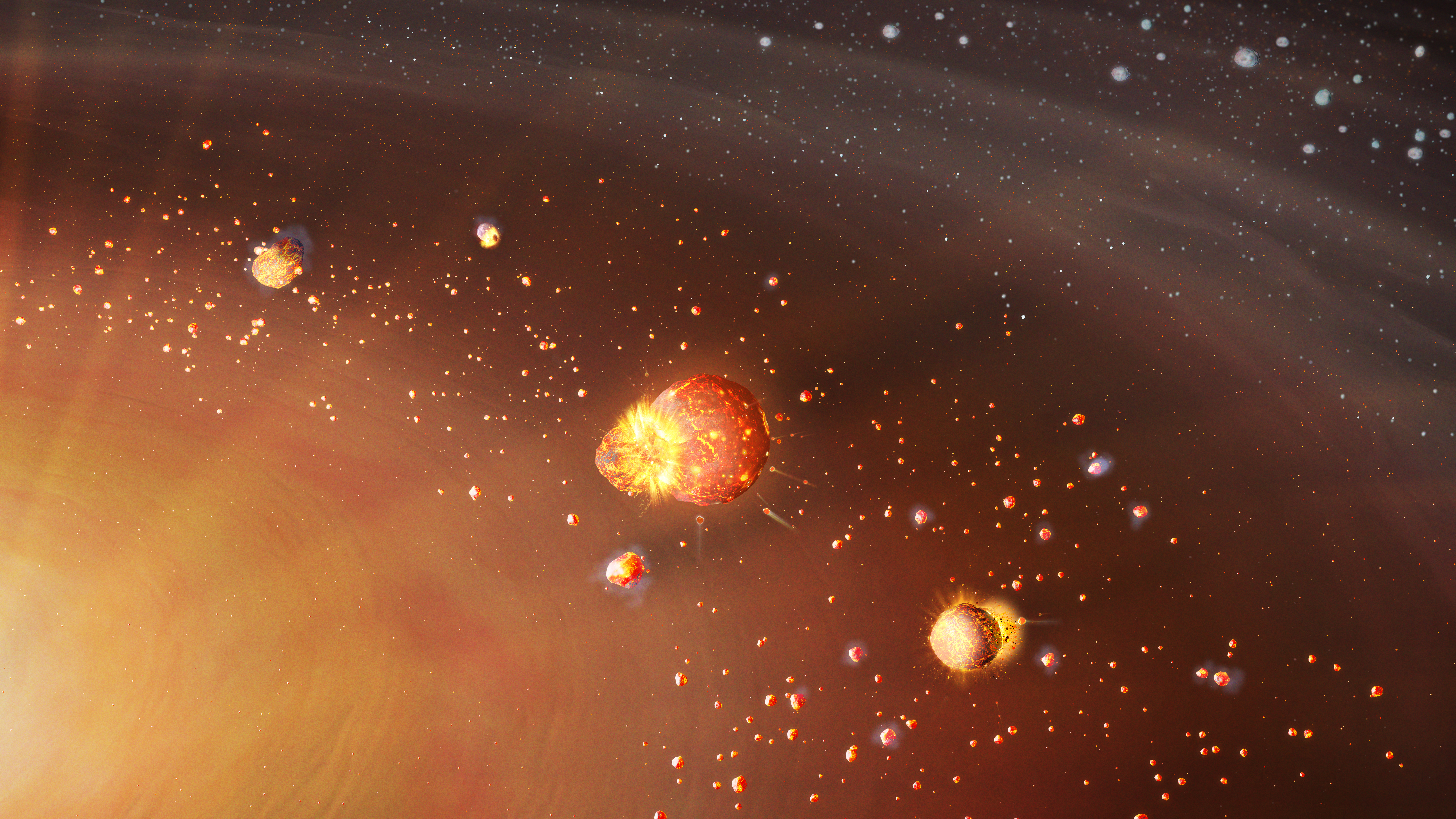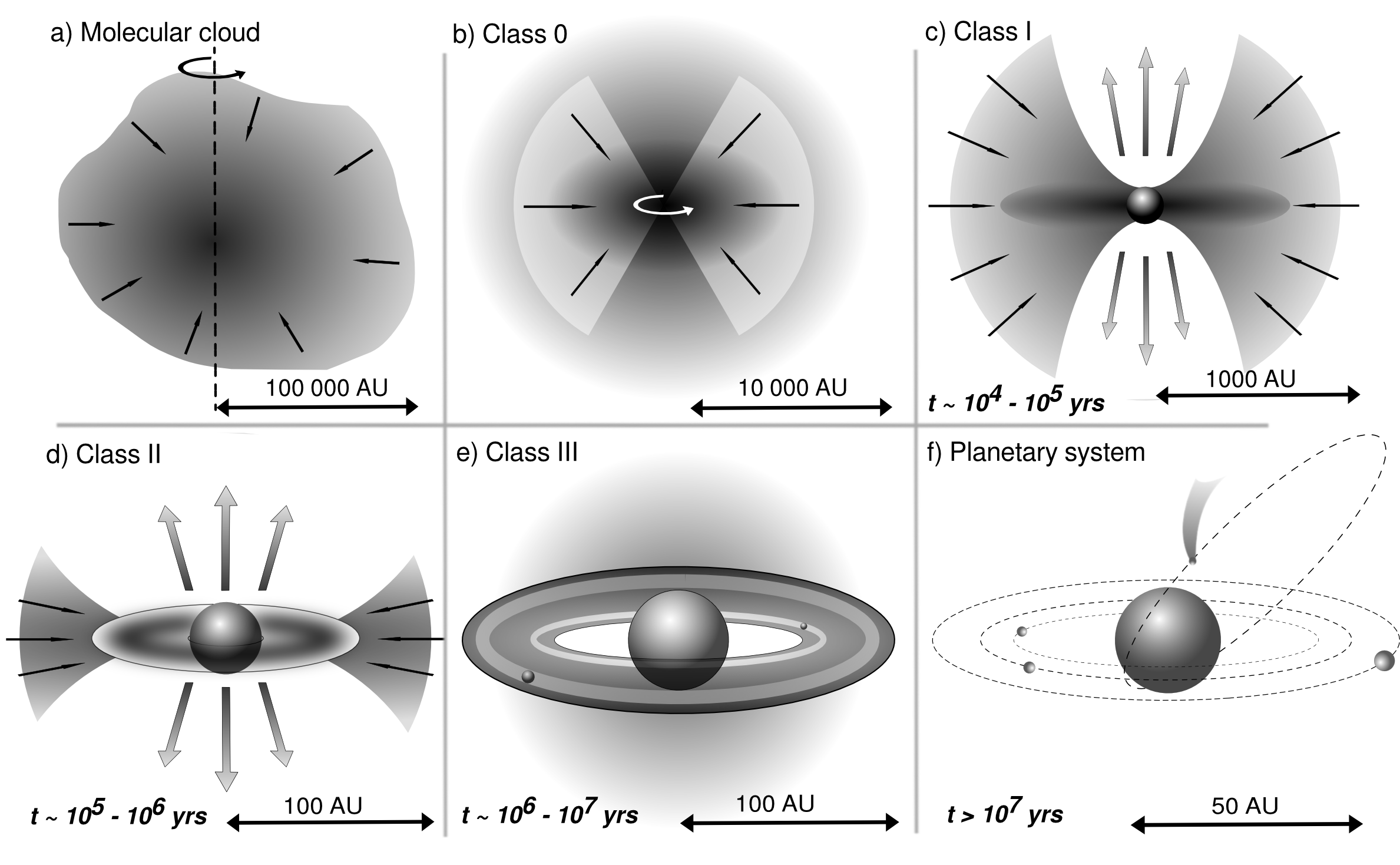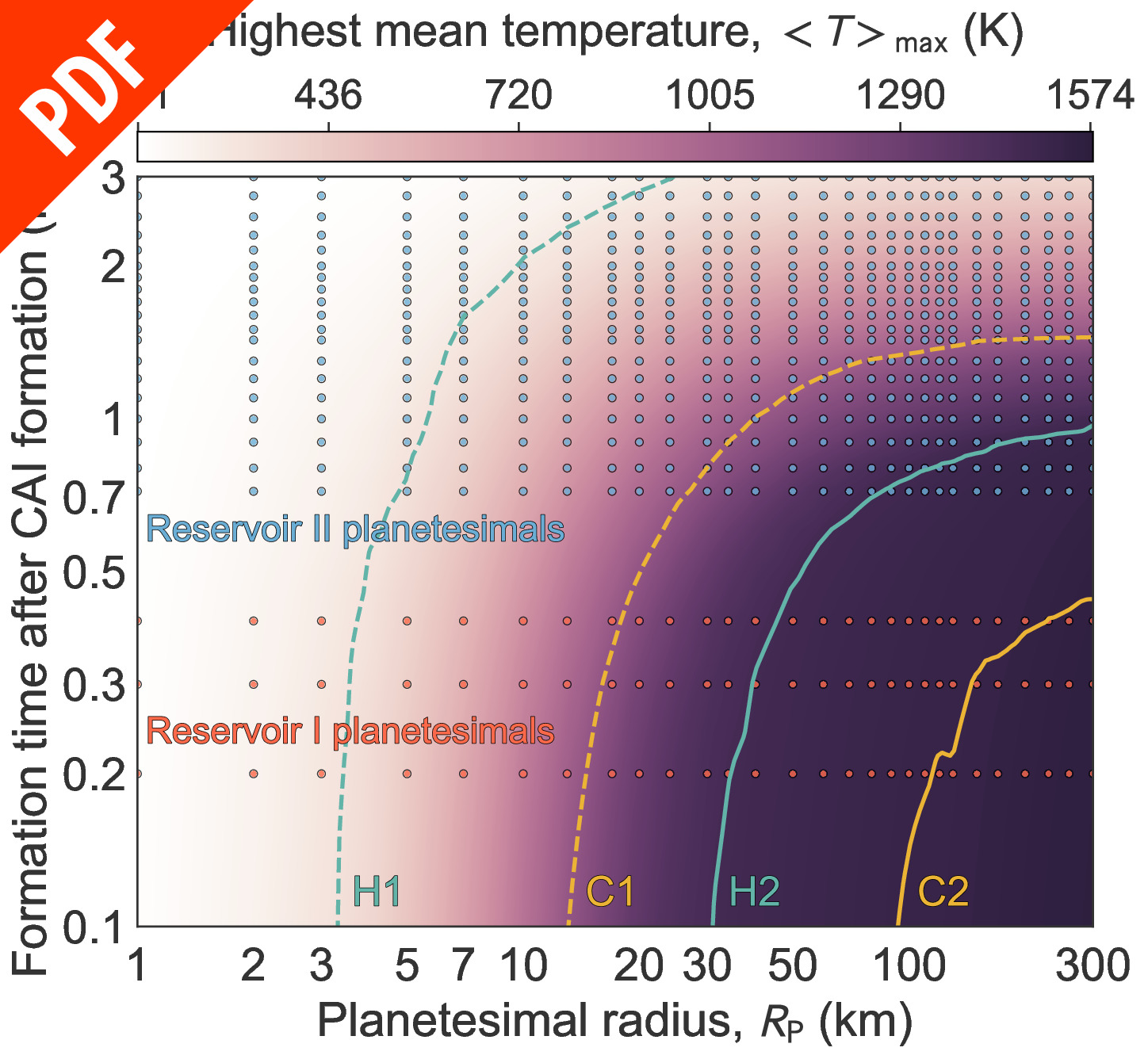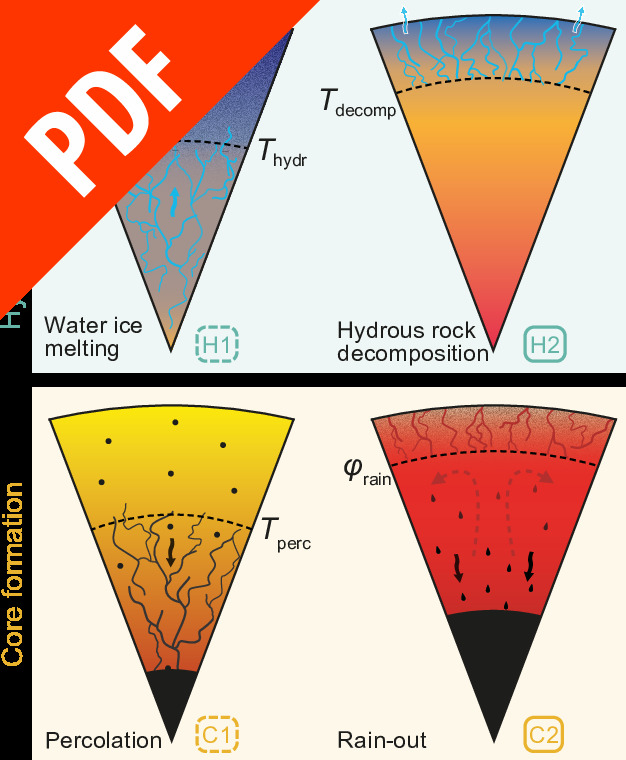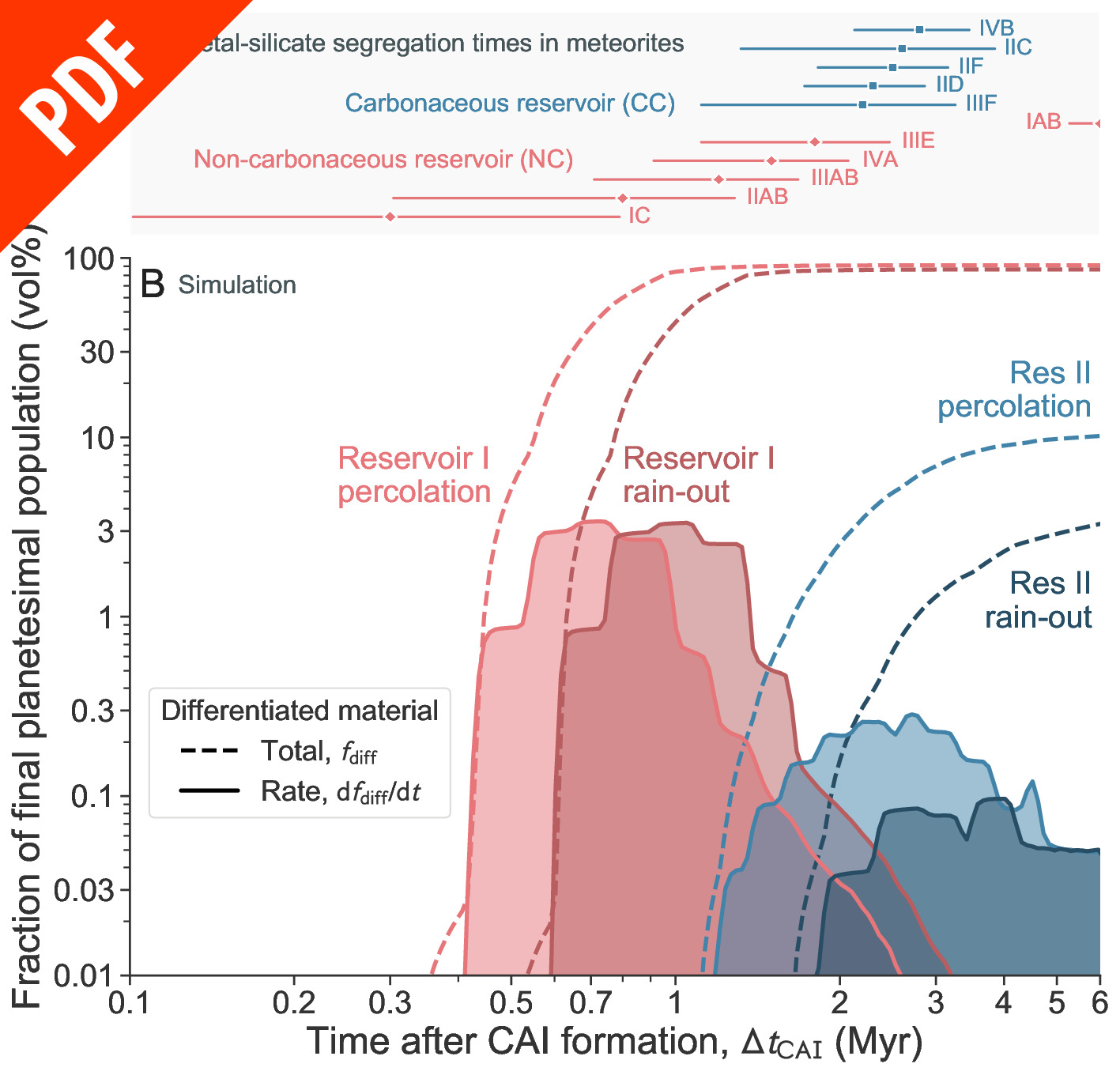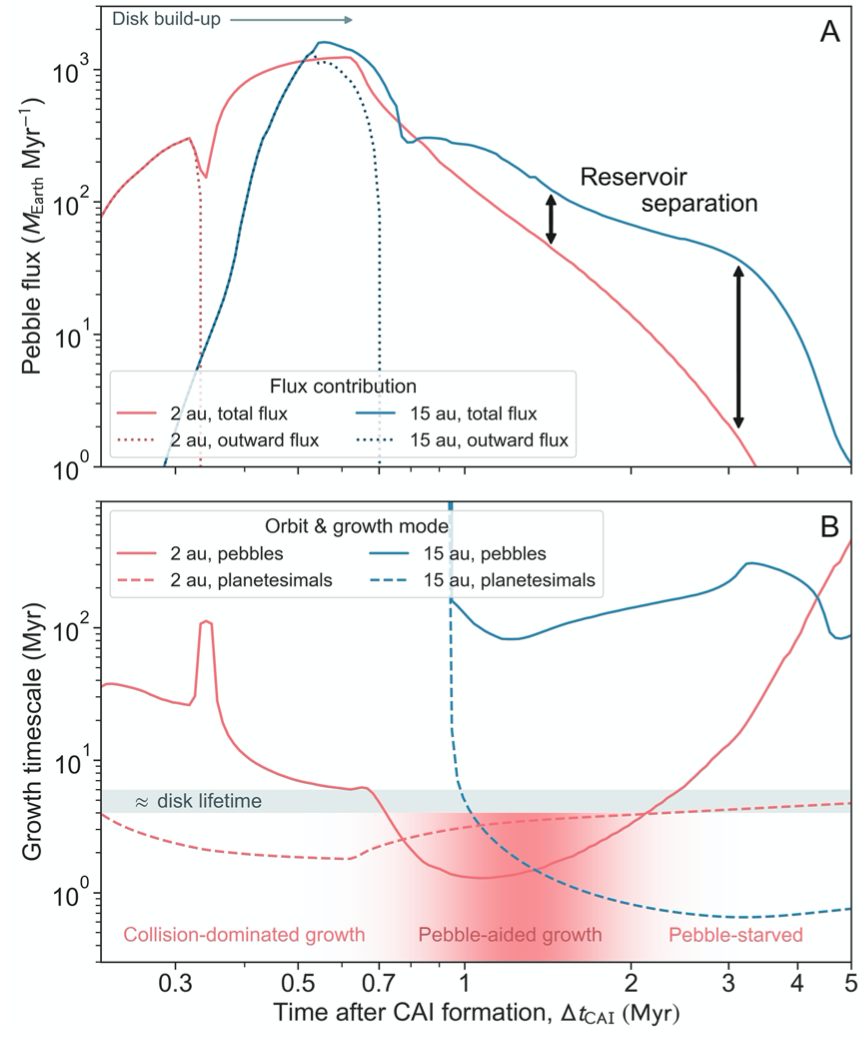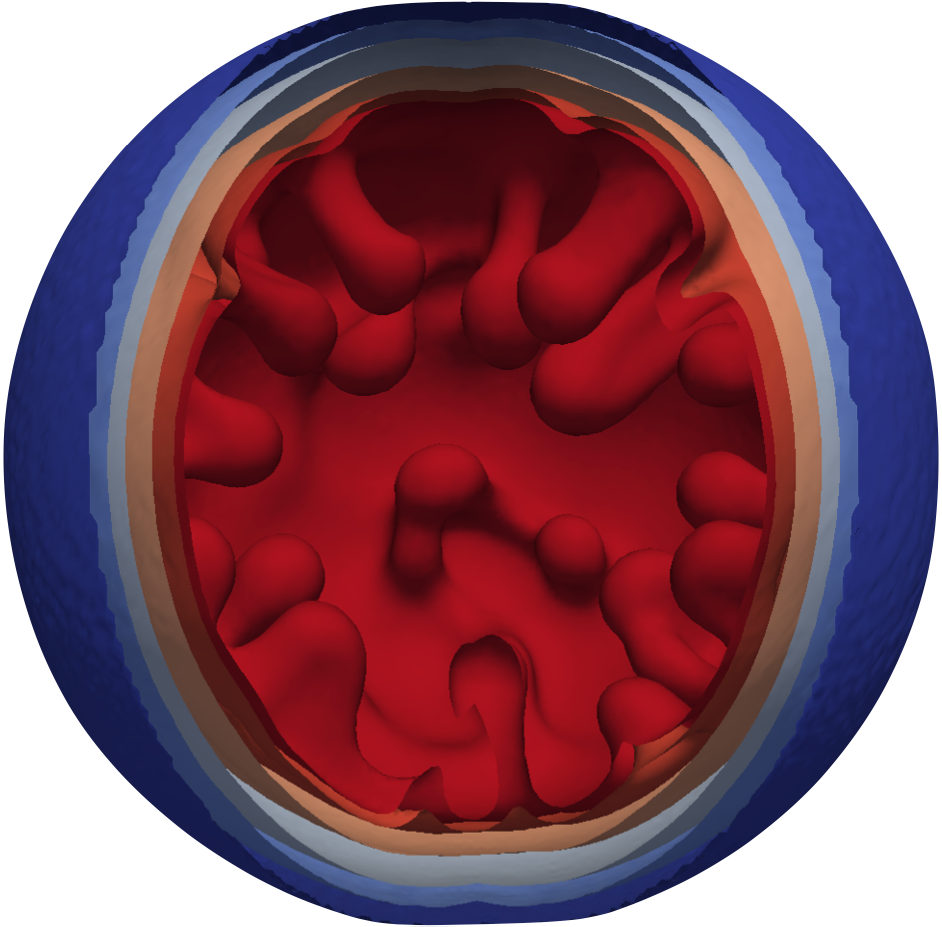We found a scenario of the early evolution of the solar disk that fits the constraints from accretion chronology, thermochemistry, and the mass divergence of the inner and outer Solar System.
In our model, planetesimals form along the water snow line, which is first moving outwards as the protoplanetary disk becomes denser and hotter. Some planetesimals already form during the disk infall (Class I) stage, which we call Reservoir I planetesimals. Much more planetesimals form later, during the nominal protoplanetary disk (Class II) stage, which we call Reservoir II.
All the planetesimals form outside of the water snow line, which means that they are initially water-rich. The Reservoir I planetesimals inherit a significant fraction of short-lived radionuclides, in particular Aluminium-26, in which the solar nebula was enriched. The decay of Aluminium-26 is the main source of internal heating. The left panel below shows the results of our models of the internal structure of planetesimals in terms of the internal temperature the planetesimals reach depending on their size and formation time. The streaming instability leads to top-heavy mass distribution, with most of the mass deposited in large planetesimals (~100 km). If such heavy planetesimals form early, they significantly heat up which leads to melting of the water ice, hydrous rock decomposition, and evaporation of water as well as formation of an iron core. These processes are illustrated on the right panel below.
We use the models of internal evolution of planetesimals to compare the metal-silicate separation times (left panel below) and the hydrothermal activity (right panel below) in the simulated planetesimal population to the meteorite record. We find that the planetesimals from Reservoir I undergo the core formation much earlier than the planetesimals in Reservoir II. The metal-silicate separation times in Reservoir I generally fit well with the meteorites from the so-called non-carbonaceous reservoir (NC), while the Reservoir II planetesimals correspond to the meteorites from the carbonaceous reservoir (CC).
Simulated planetesimals in Reservoir I experience a brief phase of hydrothermal activity between 0.25 and 0.7 Myr after CAI formation and then dehydrate rapidly at ~0.7 Myr. After that initial peak of water ice melting and hydrothermal activity, less than 1 vol% of water ice is retained. Reservoir II planetesimals, which form later with less Aluminum-26, experience protracted hydrothermal activity lasting for several Myr with a peak at 5 Myr after CAI formation. The Reservoir II planetesimals retained ~15 vol% water ice and ~75 vol% hydrous rock. The peak for hydrothermal activity in Reservoir II reproduces the clustering of aqueous alteration in the CC meteorite record. The single available age for the NC population (an ordinary chondrite, OC) does not coincide with the peak in the Reservoir I population, but this can be explained by most of the hydrous phases formed in the Reservoir I peak being subsequently destroyed by high-temperature internal processing.
All the meteorites we know fall into one of the two classes: the NC or the CC. As described above, the two-stage planetesimal formation scenario we found allows us to explain the difference in iron core formation ages and the content of water observed in these two classes. We find another confirmation of our scenario in the isotopic dichotomy found between the NC and CC meteorites (Warren 2011). Planetary materials from the NC and CC groups show a distinct split in the abundances of isotopes that are formed in stellar nucleosynthesis processes (see the left panel below). In our model, the two planetesimals reservoirs were formed at different times and orbital locations. During later disk stages, material from the outer disk parts was incorporated into outer Solar System planets but did not substantially contribute to the inner terrestrial planets, as the mixing was restricted by the formation of massive Reservoir II (see the right panel below). Our simulations of planetary migration during the disk phase indicate that migration of planetary cores formed from Reservoir I planetesimals would keep them separated from the material from outside of the water snow line (see the terrestrial planets migration paths indicated in the planetesimal formation history figure above).
In the longer run, our scenario also explains why the Solar System has two quite different populations of planets: the terrestrial planets, Mercury, Venus, Earth, and Mars, which are all relatively small and dry, and the volatile-rich giant planets, Jupiter, Saturn, Uranus, Neptune. In our models, this split arises due to distinct paths of internal evolution related to the different amounts of radiogenic heating in the two reservoirs of pre-planetary bodies. The terrestrial planets are dry not because they formed closer to the Sun, but because their planetary building blocks formed earlier. Although the cores of giant planets started to form later, their growth was greatly accelerated by the high amount of planetesimals and pebbles available in the outer parts of the solar disk.
